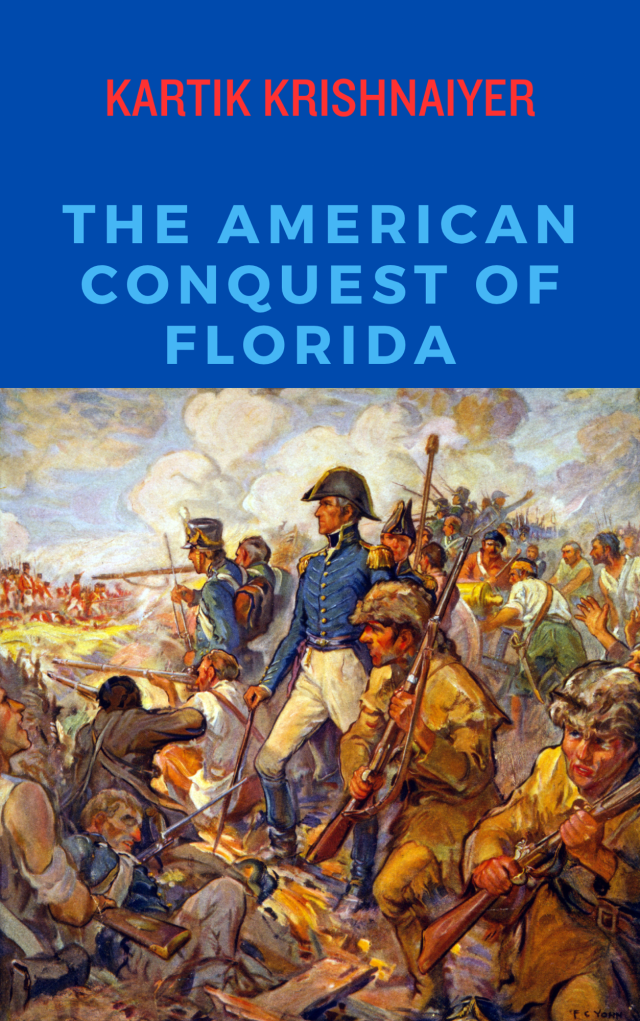Florida did not become part of the United States until 1819. However, the opportunity had arisen for Florida to be part of the original rebellion against British rule. Florida had been under British rule since 1763, having been a long-standing target for conquest. The British tried in 1702, 1707, 1739 and 1742 to conquer Florida from Spain. The British were finally handed Florida by the 1763 Treaty of Paris that ended the Seven Years War, the first true “world war” in human history – battles were fought in North America, Europe and the Indian Subcontinent during this conflict which pitted France and its allies against England and her allies.
Like the Thirteen Colonies, Florida was still under British rule in 1775. The Continental Congress invited the British Colonies of East and West Florida to attend the meetings in Philadelphia, but both colonies declined. Why?
East and West Florida (The British split Florida into two administrative sections after assuming control of the region in 1763) declined even though Lt. Gov. John Moultrie’s three living brothers (who resided in South Carolina) all became officers in the Patriot Army. In fact Lt. Gov. Moultrie’s brother William handed the rebels perhaps its biggest victory before the Battle of Trenton during 1776, when he successfully defended Charleston, which was the largest city in the colonies south of Philadelphia.
The two Florida’s with its large catholic population inherited from nearly 200 years of Spanish rule much like Quebec (catholic because it was settled by the French), stayed loyal to the crown. The British had spent the previous decade trying to reconcile with Catholics in Ireland and in other parts of the empire, after over two centuries of animosity. Political Commentator and Historian Kevin Phillips in The Cousins War studied and wrote about the religious origins of the three major civil wars in the English speaking world. The American Revolution as he demonstrates in his work fits this pattern. Catholics, who about two decades earlier had loathed anything British by-and-large stayed loyal to the crown, while Protestant denominations were split. But ultimately religion did play a role in many cases as to who fought for independence and who stayed loyal to King George III. In fact, during the Irish Rebellion of 1798 it is often forgotten many of the leaders of the uprising were protestants from Ulster who had been inspired by American Revolution and the anti-Catholic Church actions of the French Revolution. Many Catholics in Ireland in 1798 stayed loyal to British rule while some Protestants did not, something that seems inconceivable from where we sit today.
Florida also had very little established trade with the rest of British North America, and was more closely linked with the Caribbean islands in terms of commerce. Since Florida did not trade with the rebellious colonies of New England and had very few links with the Southern Colonies it wasn’t necessary to sympathize with the American rebels. In fact, Floridians probably saw British rule as protection from the largely protestant colonists gobbling them up in a new nation.
As the two Florida’s stayed loyal to Britain, Pensacola became an important military staging ground and St Augustine became that and more – a strategic city whose population swelled thanks to fleeing loyalists from Georgia and South Carolina. The American rebels made several failed attempts to capture St Augustine, and raiding was a common occurrence along the Georgia-East Florida border at the St Marys River. In 1778, British forces defeated an American combination of Militia and Cavalry at the Battle of Alligator Bridge in present day Nassau County. The British in Florida cultivated Native American allies and thus was able to prevent any sort of successful penetration by rebel forces.
In 1781, a joint Spanish-French force captured Pensacola from the British and brought West Florida back under Spanish rule. However, St Augustine remained firmly within British hands. East Florida was ceded to Spain in the peace treaty that ended the Revolutionary War. The explosive growth of St Augustine aided by fleeing loyalists is why the city that was ruled by the Spanish for over 200 years (1565-1763 and then 1784-1819) has several areas with a strong English flavor. The British only ruled over St Augustine from 1763 to early 1784, but much of the city’s growth took place in that period. St Augustine’s growth in the British period is still noticeable as you walk the streets of the historic district today.
Florida would eventually join the United States and become a haven for migrants from Alabama and Georgia, hence the Southern feel of the state up until World War II.








Having lived in Florida for 12 years, I would hesitate to say that Florida has “southern” feel. While this is true for for some of central and especially for northern Florida, it definitely is not true for south Florida.
LikeLike